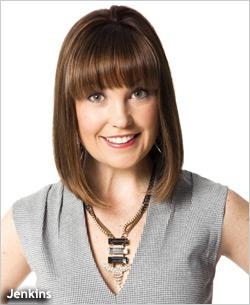retail
Q&A: Target Flavors Content To Feed Infolust
- by Sarah Mahoney @mahoney_sarah, October 14, 2013

Target is sharpening up its content marketing strategy, refashioning its A Bullseye View site as a content hub, hoping to feed consumers’ growing appetite for something new.
(The Minneapolis-based retailer isn’t alone in its mania for content. A survey of attendees of last month’s Advertising Week named content marketing as the No. 1 topic.) Target VP Dustee Jenkins explains the new approach to Marketing Daily.
Q: How does content fit in Target’s overall marketing strategy?
A: Consumers have what we call infolust, and are looking for more information about trends, behind-the-scenes stories and products. So we share it across a variety of platforms, including Facebook, Pinterest, Twitter and our own site, “A Bullseye View.” It’s a content hub, connecting with media, bloggers, brand advocates, and what we refer to as the Target superfan. It’s also intended to appeal to our 360,000 team members.
advertisement
advertisement
Q: You just redesigned it. What’s different?
A: The site is now two years old, and we wanted to make mobile a priority. We used responsive design, so it can be viewed on any size screen for a better content-consuming experience. We wanted the site to have an airy, lighter feel. It’s more editorial. We make it much easier for people to comment, and since we know people are sharing much more, those tabs now follow them as they scroll.
Q: Are there any rules you try to follow?
A: As people are on this discovery journey, they don’t want to hit dead ends. They want keep going as long as they want to, so Bullseye might link to Target.com, and then from there to BabyCenter reviews.
Q: What appeals most to these superfans?
A: We work hard to figure out what’s sticky, and measure how well we are doing. She is definitely looking for ideas—fall trends for the home, a great beauty tip. If something is helpful and useful, they find that much more interesting than if it is promotional. We will give you flu tips, but won’t say “Here are cold and flu products you can buy.”
Q: How do you judge the ROI?
A: If we operated this hub in a silo, it would be incredibly expensive. But while we have just two dedicated staff members, they are working all across Target. If there’s a commercial shoot, we will go along, and use that imagery. If there’s a designer event in New York, which only 500 people are attending, we make sure it’s beautifully done, so we can cover it in a variety of ways and make sure it’s seen by thousands of people. The most important thing is an editorial calendar -- we are working months in advance, all the time, to add fresh content daily. We try to weave all the people, places, and unique things Target is doing throughout.
Q: Can you comment on how content is may be morphing the public relations function with marketing?
A: Content is a great connector. At Target, PR reports up through the CMO, so we all have that brand lens. But PR has always been in the business of telling great brand stories. Years ago, we did with a press release and maybe a feature article. But now we can do so much more. For example, we recently introduced Tevolio, a steal of a deal for bridal. We could have just put out a release and hoped the bridal press covered it. But instead, we celebrated it on the site. Our customers got involved. And it got picked up by both “The Today Show” and “Good Morning America.” It’s so much richer.
So yes, there is more blurring of the lines between PR and marketing. But the one caution that works for us is that is must be editorial, not promotional. We can’t say, “This is a great yellow dress, come buy it, it’s on sale.” But we can say why mustard yellow is a hot trend for the season.
Q: How does Gen Y figure in?
A: Millennials can spot good content immediately. When they don’t like it, they tell us. When they do, they share it.
Q: Does it increase sales?
A: The No. 1 goal of the site is to build brand affinity, and we believe that ultimately leads to sales. So if we do a story on how to do a red lip or a smoky eye, we can see that they go on to purchase.
Q: Do the results surprise you?
A: All the time. For example, Target was moving into sustainable seafood, and we decided to do an infographic about it. It resonated like crazy, far beyond the sustainability audience. It’s a good reminder that people are multifaceted, and interested in a lot of things.




